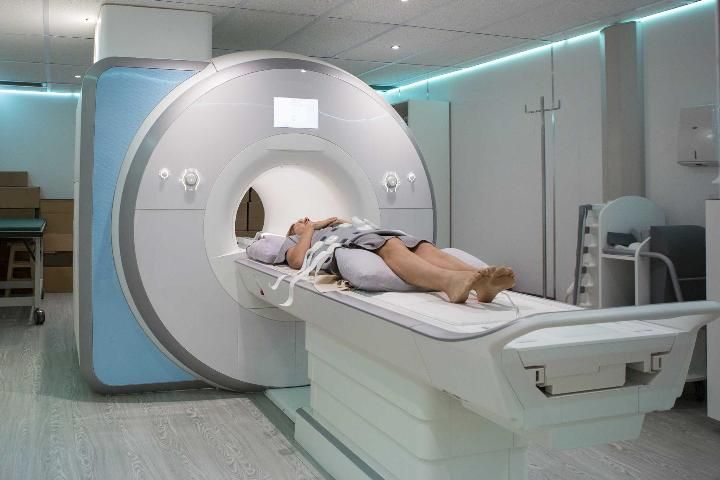This is the first in a 12-part series on breast cancer. To view the rest of the titles in this series, click here.
A breast cancer diagnosis is always a challenge to the patient and her family.* People react in different ways to a breast cancer diagnosis. Some breast cancer patients want to take an active role in understanding and choosing their treatment, and others prefer to leave decisions to their health care providers. This publication provides information that will help persons who want to understand and be actively involved in treatment decisions.

Credit: kali9/GettyImages.com
Many treatment decisions are based on tumor size, lymph node status, and hormone status, all of which contribute to risk of recurrence and breast cancer survival. The numbers that doctors use to describe risk, chance of recurrence, and survival can be confusing. It is helpful to ask your doctor specific questions about treatment recommendations and expected benefit.
The important basic questions to ask your doctor are:
- What type of breast cancer do I have?
- What is the ER status?
- What is the PR status?
- What is the HER-2 neu status?
- How aggressive is my tumor?
- What stage is the tumor?
- What is the tumor size?
- How many lymph nodes are involved?
- Has the tumor metastasized?
This publication will explain why these are important questions and what the answers mean. It also will help you determine the benefits of various treatments for breast cancer.
What type of breast cancer do I have?
There are several types of breast cancer. They vary as to what the cells look like and which tissues are involved. Ask your doctor what kind of breast cancer you have and how different therapies can reduce your risk of recurrence. You should ask about the ER status, PR status, and HER-2 neu status of the tumor, which are three factors that affect treatment options.
ER Status
The female hormone estrogen affects some breast cancer tumors. An ER+ tumor is "estrogen receptor positive," meaning that estrogen can attach to the receptors and help the tumor grow. This is helpful to know because it means that blocking estrogen-binding with medicines such as tamoxifen or decreasing estrogen production with medicines like aromatase inhibitors can help to prevent a recurrence of this breast cancer.
PR Status
The female hormone progesterone also can affect some breast cancer tumors by stimulating them to grow. A PR+ tumor is "progesterone receptor positive." The progesterone receptor is regulated by the estrogen receptor, which is usually also present or active in these tumors. Therefore, when the tumor is PR+, it is usually responding to estrogen. This means that medicines that block estrogen binding to the cancer cell (such as tamoxifen) or that decrease estrogen production (such as aromatase inhibitors) can be helpful in treating the tumor.
HER-2 neu Status
Another tumor growth factor is called HER-2 neu. This is a protein that, when overexpressed, allows abnormal cancer cells to live and multiply. This growth factor is active in about one-fifth of breast tumors and is a marker for aggressive breast cancer. Medicines that target this growth factor, such as trastuzumab (Herceptin), can be used for treating HER-2 neu positive breast cancers.
How aggressive is my tumor?
One feature of breast cancer that is important for your doctor to assess is how fast the cancer is growing. When cancers do not grow fast, they tend to be less aggressive, and treatments often will be successful. On the other hand, fast-growing breast cancer can be difficult to treat.
To decide how aggressive a tumor is, doctors look at three measurements from the pathology report: (1) cell differentiation, (2) mitotic activity, and (3) cell nuclei abnormality. Information about these measurements usually is provided through three scales that are totaled to give a score that ranges from three to nine. Some hospitals may use different scales.
Cell Differentiation
"Normal" breast cell differentiation means that the cells are able to normally form the glands that make up the breast tissue. When cells form tissue that looks less like breast tissue glands, they are called less differentiated. This usually is a sign of a more aggressive cancer. Your score will range from one to three, with higher scores indicating less differentiation.
Mitotic Activity
This score shows how fast the tumor cells are dividing. Aggressive tumors have a large number of cells in the act of dividing (mitosis). Your score will range from one to three, with higher scores indicating more aggressive activity.
Cell Nuclei Abnormality
The nuclei of the cells will be graded based on how similar in size they appear. Your score will range from one to three, with higher scores indicating higher levels of lumpy, differently sized nuclei.
Ask your doctor to give you a copy of the pathology report from your biopsy so you can fill in the chart below. Some pathology reports may include only two scores. If this is the case, your total score will be out of six possible points instead of nine. A score of three to five out of nine is called grade one, and tends to indicate a less aggressive cancer. A score of six to seven is grade two, and a score of eight to nine is grade three. Grade three tends to be a more aggressive cancer.
In addition, a biopsy report may indicate whether blood vessels are feeding the lump. This means that the tumor is well nourished and aggressive. A large number of dead cells, called necrosis, also may mean the tumor is growing rapidly and has outgrown its blood supply. Lymphatic invasion is when the tumor cells escape into the lymphatic channels that drain fluid from the breast to the lymph nodes; this can be a sign of a more advanced breast cancer.
All of this information is used by the health care team to recommend a treatment plan that could include combinations of surgery, radiation, chemotherapy, and hormones.
What stage is the tumor?
When breast cancer is confined to the breast, it is not life threatening. Breast cancer becomes less curable when it spreads to other organs in the body. This is called metastasis. Most breast cancer treatments are designed to prevent the spread of cancer cells or reduce their activity if they have spread. Staging the breast cancer is critical to determining how aggressively to treat the breast cancer. To stage the breast cancer, the physicians look at the size of the tumor, check for the presence of cancer cells in lymph nodes, and determine whether or not breast cancer cells have grown into tumors in other organs in the body (metastasis).
Tumor Size
The size of the tumor is important. Smaller tumors usually require less aggressive treatment. A tumor that is smaller than two centimeters (cm) is labeled T-1, a tumor that is between two and five cm is T-2, and a tumor that is larger than five cm is T-3. A T-4 tumor is one that is stuck to the skin or chest wall.

Credit: nattrass/GettyImages.com
The tumor may be measured by "hand" by the doctor or measured by the pathologist after surgery. Mammograms, ultrasound, and MRI (magnetic resonance imaging) also may give an indication of the size of a tumor. The most accurate measurements are made after surgery.
Lymph Nodes
Tumors can slough off cancerous cells that circulate through the body in the lymph or blood system. The pathologist tests lymph nodes near the tumor (often in the armpit) to see whether or not cancer cells have left the breast. The number of lymph nodes that have cancerous cells will affect which treatment is used. A score of N-0 means that there is no cancer in any lymph nodes, a score of N-1 means that there is cancer in one to three lymph nodes, a score of N-2 means that there is cancer in four to nine nodes, and a score of N-3 means that there is cancer in ten or more nodes.
Metastasis
A bone scan, CAT (computed axial tomography) scan, or PET (positron emission tomography) scan can be used to determine if the cancer has spread (metastasized) to other organs of the body. Usually, one of these scans is ordered only if a breast tumor is larger than four cm or if there are four or more lymph nodes involved. If there is no evidence of spread, the score is M-0; if there is, the score is M-1.
These three indicators are combined to help doctors decide on treatments. Stage 1 tumors are not likely to have spread and may be more easily treated with surgery. Stage 4 tumors have metastasized and are not able to be cured, although they still can be treated to reduce size, delay progression, and prolong survival.
Doctors rely on the postsurgery pathology report to tell them the size of the tumor, its invasiveness, and the number of lymph nodes involved. Staging can be tricky when chemotherapy is used to reduce the size of the tumor before surgery (neoadjuvant or preoperative chemotherapy), because the doctor may not be able to determine the original size of the tumor. Since staging is based on initial tumor size, there is no good way to interpret information from tumors treated with neoadjuvant chemotherapy. This is one of the many fuzzy areas of breast cancer treatment.
If any lymph nodes are involved, doctors can be fairly certain that the cancer has spread. In about 20% to 30% of cases in which no lymph nodes are found with cancer cells, however, the cancer also will have spread. Although removing lymph nodes may be important in order to stage a tumor, lymph nodes also are important to health. Some women may be able to take advantage of a technique called sentinel-node biopsy. In this procedure, the surgeon identifies and removes the lymph node(s) most likely to first contain cancer cells. If that node is negative, additional nodes probably will not need to be removed.
What are the odds of survival?
The first occurrence of breast cancer usually is not fatal. Surgery can remove the tumor, and further treatment will target remaining cancer cells. Doctors may use radiation treatment, chemotherapy, and/or hormone therapy to starve and kill cancer cells that remain after surgery. Even with these treatments, however, some cancer cells may remain. If these cells eventually grow into additional tumors, they may be in the lungs, liver, brain, or bones. This is metastasis of the breast cancer. Drugs can slow the growth of cancer at this stage, but it is very difficult to be "cured" after metastasis. As new drugs are developed, more women are living with metastatic breast cancer for many years.
Doctors use historic data from other women who have had breast cancer to tell patients what is likely to happen to them. The longer women live, the more likely they are to die of other causes; thus, doctors look at five- and ten-year survival rates. If you hear that you have an 80% chance of disease-free survival to five years, it means that, statistically, 80 out of every 100 women with your stage and type of cancer will be alive and cancer-free five years after their diagnosis. The other 20 will have had a recurrence. If breast cancer recurs, it is harder to give predictions of recurrence and survival, since there is less information for doctors to use to try to help predict outcomes. Unfortunately, the use of the five-year point does not mean that breast cancer recurs only within the first five years. Some women have metastasized breast cancer ten or more years after their first diagnosis.
How does treatment change the odds of survival?
Chemotherapy, radiation, and hormone therapy can help more women survive breast cancer. Because these therapies also involve side effects and additional risks, they are not used in all cases. Since you may participate in the decision as to whether you will get certain treatments, it is helpful to understand how these treatments affect your chance of survival.
Let's say you hear that a certain treatment reduces the risk of recurrence by one-third. This means that if 30% of women in your situation were likely to have a recurrence, then of those who took this treatment, only 20% would be likely to have a recurrence (one-third of 30% is 10%; 30% minus 10% is 20%). In general, the greater the chance of recurrence at the start, the greater is the likely benefit of treatment. If your stage gives you a 95% survival rate (5% recurrence rate), you might decide that treatment does not change your risk enough to make it worthwhile. For instance, in this example, a treatment that reduces recurrence by one-third would change the 95% survival rate to 96.5%.
In the following example (Table 3), a sixty-year-old woman with a four-centimeter ER+ tumor with grading of the cells rated at five out of six points was treated with surgery, radiation, chemotherapy, and tamoxifen. Notice how each treatment increases her chances of survival over the next ten years.
You can ask your doctor how each component of your treatment may improve your chances of survival, as in the example in the chart. Your doctor may speak to you about a test called genetic profiling that can be done on the tumor tissue. This test is useful only for women who have an ER- or PR-positive breast cancer that is lymph node–negative and HER-2 neu–negative. Also, it is usually only used if the tumor is small (up to 2 cm), with a grade of 1 or 2. This test can help predict the benefits you may receive from both chemotherapy and hormonal therapy.
It is very important to understand that the treatment of breast cancer is rapidly changing as research is progressing. Each woman, or man, diagnosed with breast cancer is offered treatments based not only on the status of their cancer, but on their overall health and their mental, social, and cultural well-being. This information can provide you with a better understanding of what your doctors will speak with you about, but there always is much more to the picture.

Credit: Johnny Greig/GettyImages.com
Summary
Each breast cancer case is different, and each woman responds to treatment differently. Some women prefer not to think much about the disease or treatment. Others prefer to learn all they can and want to be very involved in all decisions.
There are many sources that can help you find answers to your questions. Books, local breast cancer support groups, and certain websites all contain useful information. You should be aware that the Internet contains many unreliable sites, as well as reliable and research-based sites. Many doctors and health organizations can recommend good references and resources.
*Since the majority of breast cancer patients are women, we refer to breast cancer patients as females. We acknowledge that about 1% of breast cancer patients are men, and that they face these same as well as other challenges.